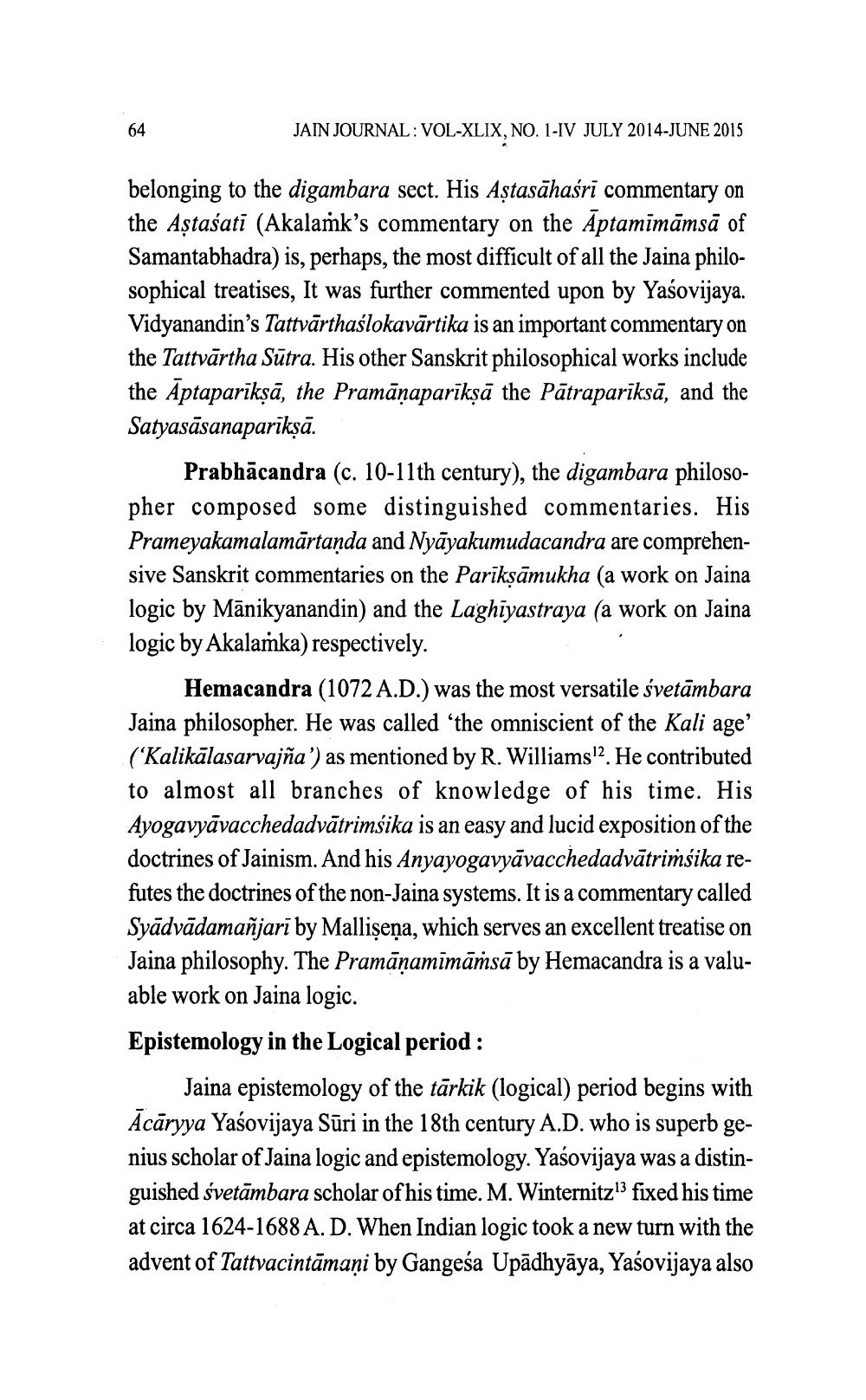________________
JAIN JOURNAL: VOL-XLIX, NO. 1-IV JULY 2014 JUNE 2015
belonging to the digambara sect. His Astasāhaśrī commentary on the Aștašati (Akalamk's commentary on the Āptamīmāmsā of Samantabhadra) is, perhaps, the most difficult of all the Jaina philosophical treatises, It was further commented upon by Yaśovijaya. Vidyanandin's Tattvārthaślokavārtika is an important commentary on the Tattvārtha Sūtra. His other Sanskrit philosophical works include the Aptaparīksā, the Pramāņaparīkņā the Pātraparīksā, and the Satyasāsanaparīkņā.
Prabhācandra (c. 10-11th century), the digambara philosopher composed some distinguished commentaries. His Prameyakamalamārtanda and Nyāyakumudacandra are comprehensive Sanskrit commentaries on the Parīkņāmukha (a work on Jaina logic by Mānikyanandin) and the Laghīyastraya (a work on Jaina logic by Akalańka) respectively.
Hemacandra (1072 A.D.) was the most versatile svetāmbara Jaina philosopher. He was called 'the omniscient of the Kali age' (“Kalikālasarvajña') as mentioned by R. Williams 2. He contributed to almost all branches of knowledge of his time. His Ayogavyāvacchedadvātrimsika is an easy and lucid exposition of the doctrines of Jainism. And his Anyayogavyāvacchedadvātrimsika refutes the doctrines of the non-Jaina systems. It is a commentary called Syādvādamañjarī by Mallişeņa, which serves an excellent treatise on Jaina philosophy. The Pramāņamīmāṁsā by Hemacandra is a valuable work on Jaina logic. Epistemology in the Logical period :
Jaina epistemology of the tārkik (logical) period begins with Ācāryya Yaśovijaya Sūri in the 18th century A.D. who is superb genius scholar of Jaina logic and epistemology. Yaśovijaya was a distinguished svetāmbara scholar of his time. M. Winternitzfixed his time at circa 1624-1688 A. D. When Indian logic took a new turn with the advent of Tattvacintāmaņi by Gangesa Upādhyāya, Yaśovijaya also




